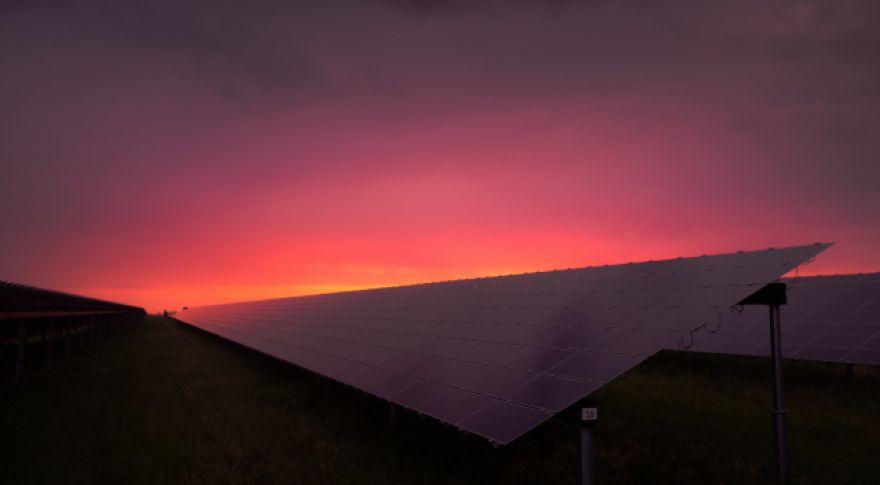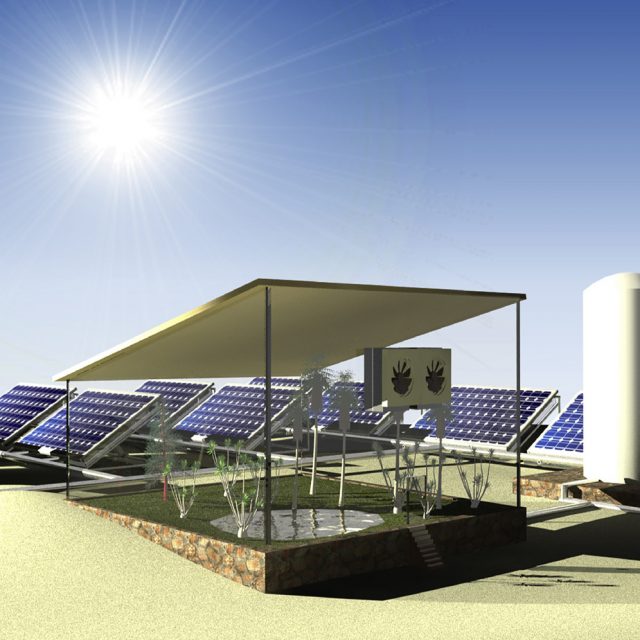
New Solar-Powered System Produces Energy And Drinking Water
Peng Wang, an environmental scientist at the King Abdullah University of Science and Technology (KAUST), was working alongside a team of biologists and engineers to improve solar panels’ efficiency when he thought of the idea for the system. Wang grew up in a Western China village without running water, requiring his family to fetch water from a communal well. If scalable, his team’s invention could supplement or fulfill similar communities’ water and energy needs.
The system depends on a water-based gel, or hydrogel, created by Wang and his colleagues.

An artist’s rendering of Wang’s solution. (Image: R. Li et al/Cell Reports Physical Science 2022)
But where does solar energy come in? Once the team’s hydrogel had been proven effective, they got to work applying the gel to the backs of solar panels. Then they attached a metal chamber to collect the water. This water supply could be used in multiple ways: to water crops, hydrate humans and animals, or cool the attached solar panels and increase energy output by nearly 10 percent.
Approximately two billion people globally lack safe drinking water, according to the scientists’ , which was published earlier this year in the journal Cell Reports. Another 800 million people lack access to electricity. Common solutions to these problems involve costly infrastructure that takes a significant amount of time to implement. In contrast, an all-in-one system that doesn’t rely on external plumbing or electrical work could be literally life-changing.
“Low-barrier-of-entry decentralized approaches are nowadays believed most suited to economically provide electricity and water on site for point of consumption,” the paper reads. “We have successfully developed a self-sustained, integrated … system that can produce extra electricity, fresh water, and crops in arid regions. This strategy has the potential to make a solid contribution to the global water-energy-food nexus, generate electricity and produce water for remote and off-grid communities, improve food security in arid and semi-arid regions, and do so in a sustainable manner.”
Now Read: